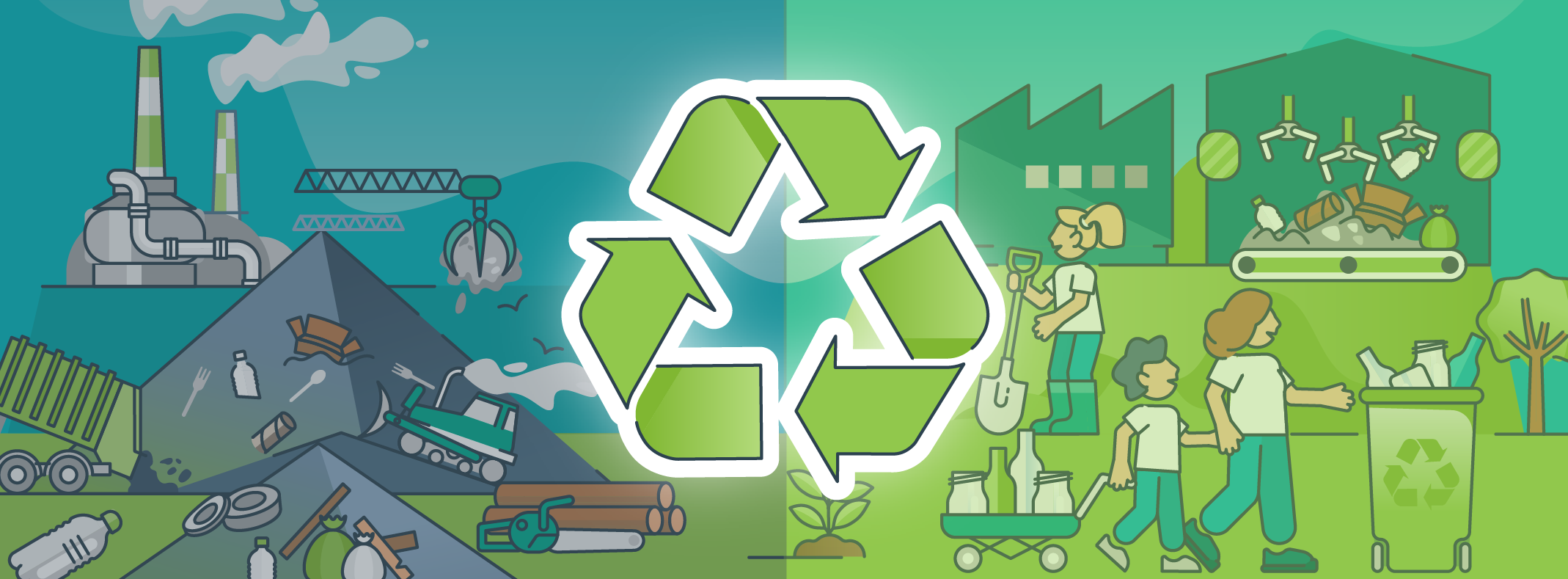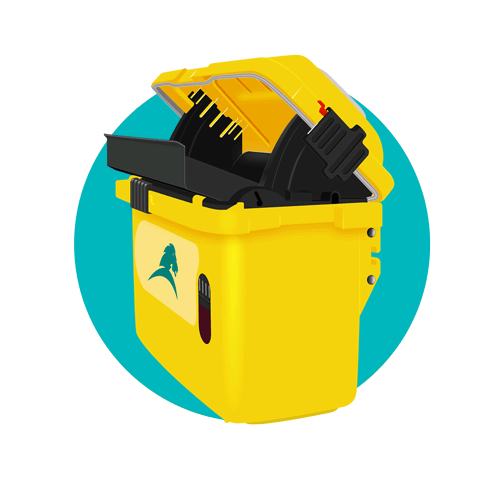What Is the Waste Hierarchy?

Many Canadian healthcare facilities have a Net Zero goal when it comes to waste management. Because of this, finding ways to dispose of waste in an environmentally friendly manner has become increasingly important. One sampling of Canadian healthcare facilities estimated they produce close to 87,000 tonnes of waste annually. Understanding the waste hierarchy can help with the process of minimizing this impact. Here we’ll explore what the waste hierarchy is and how your facility can use it to make waste management decisions that will minimize its effect on the environment. Ready to learn some tips for implementing the waste hierarchy in your facility? Let’s dive in.
TOPICS WE WILL COVER:
1 / What is the Waste Hierarchy?
2 / The Five Parts of the Waste Hierarchy
3 / The Purpose of the Waste Hierarchy
4 / The Importance of the Waste Hierarchy in Healthcare Facilities
5 / How To Start Using the Waste Hierarchy
6 / You’re Not Alone in Your Waste Management
What Is the Waste Hierarchy?
The most common waste hierarchy in Canada lists five waste management strategies on an inverted pyramid, starting with the strategy that is best for the environment and ending with the strategy that is worst for the environment. The hierarchy is intended to help facilities choose approaches to waste management that create a minimal impact on the environment. Here are the steps included in the hierarchy:
The Five Parts of the Waste Hierarchy
1. Reduce: This step encourages companies and facilities to reduce the amount of waste they produce so that it does not enter the solid waste stream or need to be recycled. Enhancing this aspect will have the biggest impact on your sustainability goals and the environment.
2. Reuse: Reusing objects or materials is another way of lowering the amount of waste that needs to be recycled or disposed of. This can be particularly challenging in healthcare settings where sterility is an utmost priority, but still worth exploring on a case-by-case basis.
4. Recycling: Recycling materials that end up as waste lowers the amount of waste that ends up in landfill. Recycling also allows new items to be manufactured with used materials, rather than necessitating the use of raw materials.
5. Recovery: Recovery is another way of keeping waste out of landfills. It involves using materials that cannot be reused or recycled to produce energy or fuel.
6. Landfill: When waste cannot be prevented or used in one of the ways listed above, it is typically buried in a landfill. This is the least desirable waste management approach and should make up the smallest portion of your waste stream where possible.
The Purpose of the Waste Hierarchy
The Canadian waste hierarchy is intended to encourage waste prevention and create a circular economy. The best way to keep waste out of landfills is to avoid creating waste in the first place. Of course, in healthcare settings, waste will be created, and efforts should be made to keep it out of landfills for as long as possible. In a circular economy, products and materials are kept in use as long as possible through re-purposing, refurbishing, recycling, and other ways of reusing items and materials.
The waste hierarchy helps individuals, businesses, and organizations see which waste management strategies are best and worst for the environment so that they can consider them when obtaining, using, and disposing of items. It can encourage people and businesses to try to use the approaches that are the most environmentally friendly, such as to reduce and reuse, first.
As a major waste generator, healthcare facilities are in a position to make a significant impact by implementing the waste hierarchy. Your healthcare facility can work to reduce the amount of waste it generates by using less disposable products and packaging. However, there will still be waste generated, which leads to the next step of reusing the waste. There may be packing, medical items, or containers that your facility could reuse. Once these items are separated from the waste stream for reuse, your healthcare facility can move to the next step, which is recycling. Glass, paper, and some plastics can be recycled to keep them out of landfills.
Any waste that cannot be reused or recycled will need to be appropriately disposed of. It is possible that some of the waste could be recovered, but a portion will end up in landfills, which is the least desirable outcome. However, if you follow the waste hierarchy, it should ensure that waste is dealt with in the most environmentally friendly manner and minimize the waste sent to landfills.
The Importance of the Waste Hierarchy in Healthcare Facilities
The waste hierarchy can be particularly important for healthcare facilities because of the large amount of waste they generate. However, there are other good reasons why your healthcare facility might want to use the waste management hierarchy, such as:
- Sustainability: Following the waste hierarchy involves reducing the amount of waste produced and reusing products and materials whenever possible. This will help your facility to operate with less of a negative impact on the environment.
- Reduces costs: If your facility reduces the amount of waste it produces and reuses what it can, there will be less waste generated. This can save money by reducing disposal costs.
- Helps create a circular economy: When people and businesses use resources efficiently and avoid generating waste, it can help to create a circular economy.
-
Environmentally friendly: If your facility follows the waste hierarchy, it will use the more environmentally friendly waste management approaches first, thus minimizing any negative environmental effects that may impact public health.
How To Start Using the Waste Hierarchy
In order to effectively implement the waste hierarchy, you will need to consider your entire facility. It will be essential to consider everything your facility purchases and how it is used in order to decide how you can reduce, reuse, or recycle. Then, you can take the actions necessary to implement these steps. For instance, you might reduce your use of disposable products by using reusable sharps containers, such as Daniels Sharpsmart, if your facility currently uses disposable containers.
One effective way to begin the waste reduction process is to conduct a waste audit, where professional waste consultants analyze your various waste streams and provide recommendations for optimization and improvement. Once your facility completes the audit, you will be more equipped to form a plan to help your facility implement the waste hierarchy. Part of this plan should include replacing disposable products with reusable ones when possible and encouraging employees and patients to reduce waste, as well.
You’re Not Alone in Your Waste Management
Following the waste hierarchy is a great way to lower your healthcare facility’s environmental footprint. However, it is not always easy to develop and implement an effective plan to use the waste hierarchy. As experts in practical waste solutions, Daniels Health helps healthcare facilities streamline their processes, creating a more efficient and cost-effective approach that meets sustainability goals. Daniels can help conduct a comprehensive waste audit and then create a waste management plan that will help your facility to become more sustainable. Ready to make your sustainability goals easy and attainable? Reach out to Daniels and get the process started.
